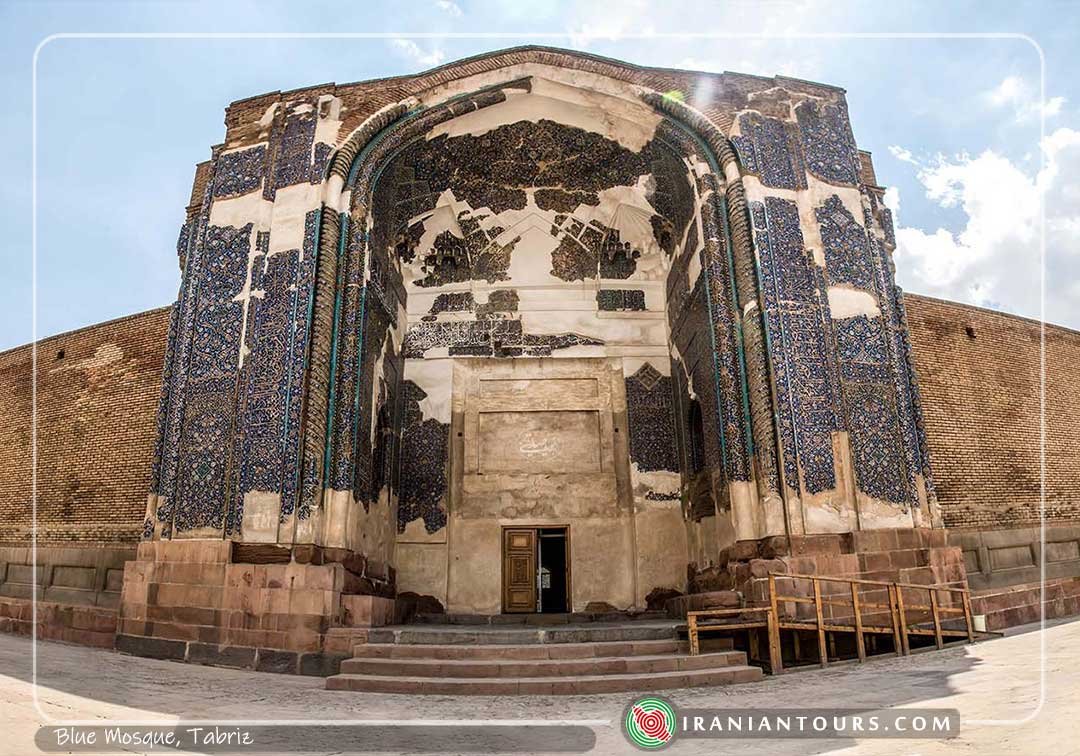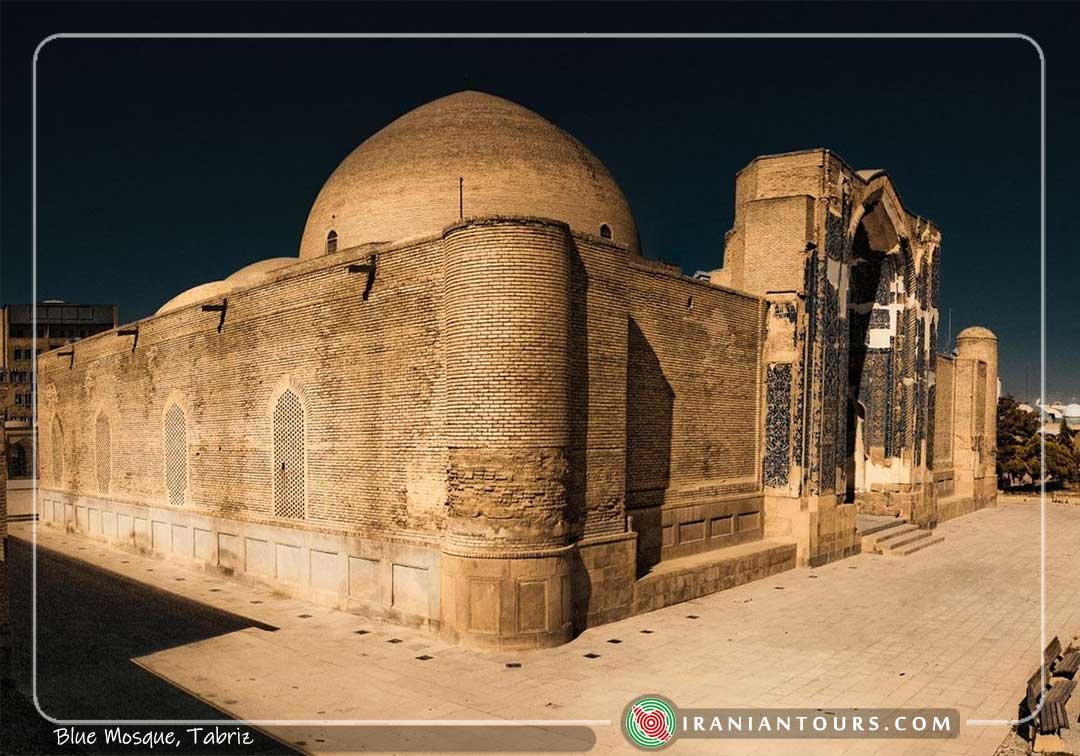Blue Mosque
Blue Mosque was once one of the masterpieces of art and architecture in the post-Islamic era. It is the only still standing remnant of Qara Qoyunlu dynasty (1351-1469) in their capital, Tabriz. Also known as “Jahanshah mosque” and “Firuze-ye Islam” (turquoise of Islam), it was built in 1465 in the reign of Sultan Jahanshah. This mosque used to be part of a larger architectural complex called Mozafarieh, consisting of a number of other buildings like a school, library, and Sufi convent. The unusual T-shape floor plan, the façade with two minarets, and other architectural features indicate the influence of Ottoman architecture. As its name suggests, the Blue mosque used to hold extensive blue tilework but, sadly, the turquoise effect has been lost today. Some parts, namely the dome and its two minarets on the north, were destroyed due to an earthquake in 1779. The ruins were left untouched for several years but, finally, it underwent reconstruction in 1939 which lasted for more than 30 years. The mosque is built on a stone foundation and is chiefly made of fired brick; however, some pieces of rare stone were also used in some parts. Also, the mosque was looted by Ottomans in 1514 and they took eight carpets to Istanbul. The striking feature of the mosque, though not much of it has remained, is its intricate tilework and abundant calligraphies. The mosaic tiles show a wide range of chromatic shades mainly in cobalt blue, gray, light green decorated with floral and vegetal patterns.
The entrance portal is decorated with fine tilework with an inscription bearing the names of the calligrapher, Neʻmatollah Ibn-Mohammad Al-Bavab, and Mozaffarieh edifice. The main entrance leads to the antechamber which makes the center of a corridor surrounding the central dome chamber on three sides, with its two arms leading to the two mihrabs on the south side of the building. The prayer hall holds nine cupolas and two niches (mihrab) on the southern side of the building. The dome chamber is an octagonal floor plan and the dome rests on eight arches. No remains have been recovered from the several smaller dome chambers surrounding this area. The walls used to be decorated with fine azure tiles and intricate gold work resembling the starry nights. Some parts of this decoration are still visible on the ceiling.
The architect considered the regional condition of Tabriz and, because of its cold weather, all the spaces were designed in a way to be used in different seasons. The southern part of the mosque functions as the graveyard which used to be the resting place of Jahanshah and his family. All tombs were ruined and only traces have been left. The only remnants of gilded tiles in this mosque are also visible in the mausoleum.





